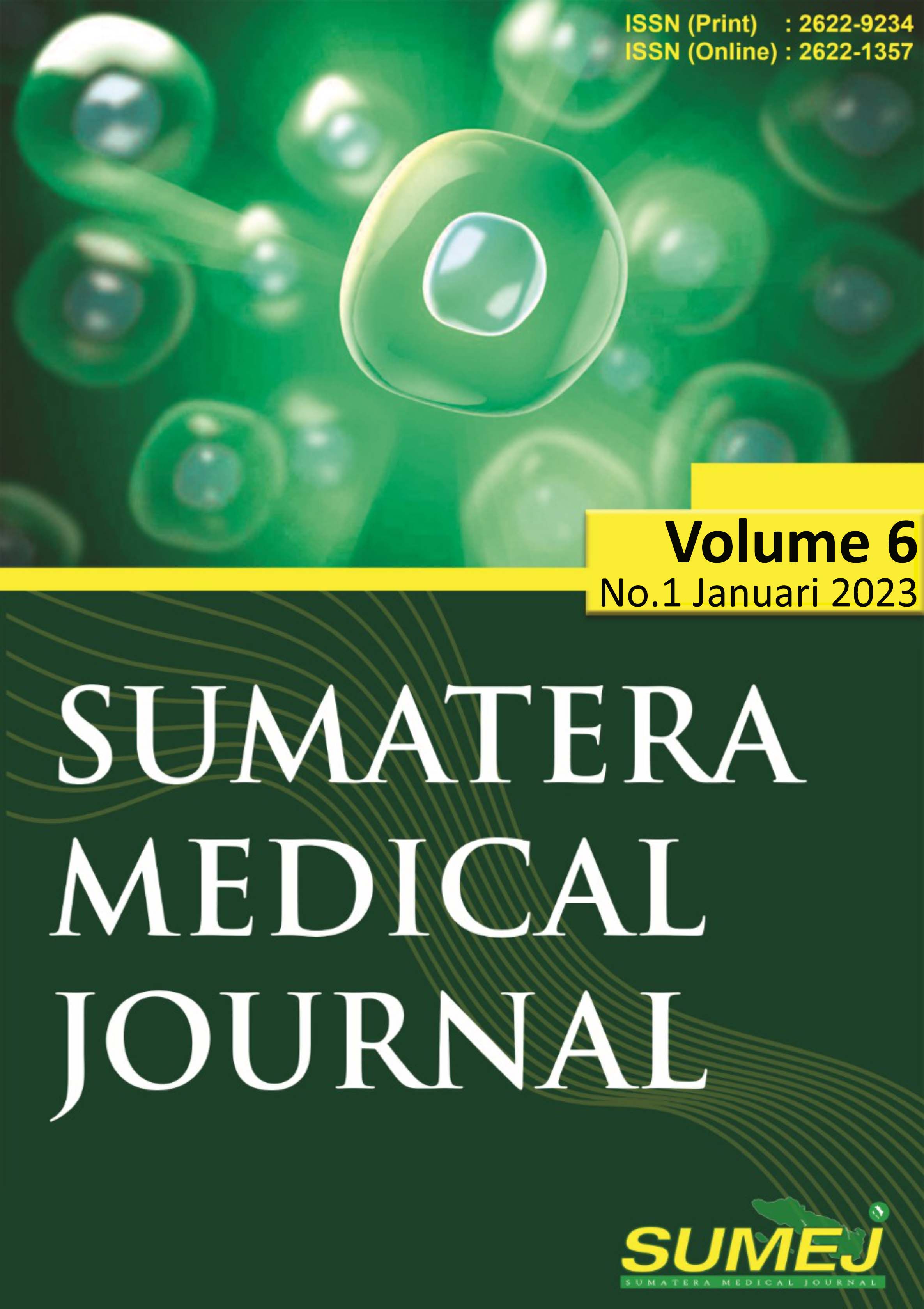Relationship between Allergic Rhinitis to Quality of Life of Students of Faculty of Medicine Universitas Sumatera Utara Batch 2018
DOI:
https://doi.org/10.32734/sumej.v6i1.7996Keywords:
allergic rhinitis, SFAR, short form-36, quality of lifeAbstract
Background: Allergic rhinitis is an inflammation mediated by Immunoglobulin E (IgE) with symptoms such as runny nose, sneezing, nasal congestion, with or without itchy nose. Although allergic rhinitis is not a dangerous disease, this disease has an impact on decreasing the quality of life of the sufferer which can interfere with daily activities. Objective: This study use to determine the relationship between allergic rhinitis and quality of life among students of the Faculty of Medicine, Universitas Sumatera Utara, batch 2018. Methods: This study used an observational analytical method with a cross-sectional study approach. The research sample was determined by simple random sampling technique and used two questionnaires, namely SFAR to assess allergic rhinitis and SF 36 to assess quality of life. Results: Based on the study, the number of allergic rhinitis sufferers from 72 students of the Faculty of Medicine, Universitas Sumatera Utara, batch 2018, 38 students suffering from allergic rhinitis. The results of data analysis using the Chi Square statistical test showed that there was a significant relationship between allergic rhinitis and quality of life, p (p value) of 0.001 (p <0.05). Conclusion: There is a relationship between allergic rhinitis and quality of life in 2018 students of the Faculty of Medicine, Universitas Sumatera Utara.
Downloads
References
Brozek JL, Bousquet J, Agache I, Agarwal A, Bachert C, et al. Allergic Rhinitis and its Impact on Asthma (ARIA) guidelines—2016 revision. J Allergy Clin Immunol. 2017;140(4):950–8.
Zhang L, Zhang Y. Increasing prevalence of allergic rhinitis in China. Allergy Asthma Immunol Res. 2019;11(2):156–69. https://doi.org/10.4168/aair.2019.11.2.156.
Meltzer EO, Diego S. Quality of life in adults and children with allergic rhinitis. J Allergy Clin Immunol. 2011;108(1):45–53.
Camelo-Nunes IC, Solé D. Allergic rhinitis: indicators of quality of life. J Bras Pneumol. 2010.
Tinartayu S, Riyanto BUD. SF-36 sebagai instrumen penilai kualitas hidup penderita tuberkulosis (TB) paru. Mutiara Med. 2015;15(1):7–14. https://journal.umy.ac.id/index.php/mm/article/view/2488/2552.
Sigarlaki D. Perbedaan kualitas hidup penderita dan bukan penderita rinitis alergi pada mahasiswa Fakultas Kedokteran Universitas Lampung tahun 2016. 2017.
Nadira A. Hubungan rinitis alergi dengan depresi pada siswa Pondok Pesantren Darul Ulum Banda Aceh. 2020.
Yuksel H, Sakar A, Yilmaz O, Yorgancioglu A, Celik P, Ozcan C. Prevalence and comorbidity of allergic eczema, rhinitis, and asthma in a city in western Turkey. J Investig Allergol Clin Immunol. 2008;18(1):31–5.
Nurjannah. Faktor risiko rinitis alergi pada pasien rawat jalan di poliklinik THT-KL Rumah Sakit Umum Daerah Zainoel Abidin (RSUDZA) Banda Aceh tahun 2011. J Kedokteran Syiah Kuala. 2011;11(2):60–5.
Novian M. Hubungan rinitis alergi dengan kualitas hidup mahasiswa Fakultas Kedokteran Universitas Sumatera Utara. 2016.
Downloads
Published
How to Cite
Issue
Section
License
Copyright (c) 2023 Sumatera Medical Journal

This work is licensed under a Creative Commons Attribution-NonCommercial-NoDerivatives 4.0 International License.
The Authors submitting a manuscript do so on the understanding that if accepted for publication, copyright of the article shall be assigned to Sumatera Medical Journal (SUMEJ) and Faculty of Medicine as well as TALENTA Publisher Universitas Sumatera Utara as publisher of the journal.
Copyright encompasses exclusive rights to reproduce and deliver the article in all form and media. The reproduction of any part of this journal, its storage in databases and its transmission by any form or media, will be allowed only with a written permission from Sumatera Medical Journal (SUMEJ).
The Copyright Transfer Form can be downloaded here.
The copyright form should be signed originally and sent to the Editorial Office in the form of original mail or scanned document.











